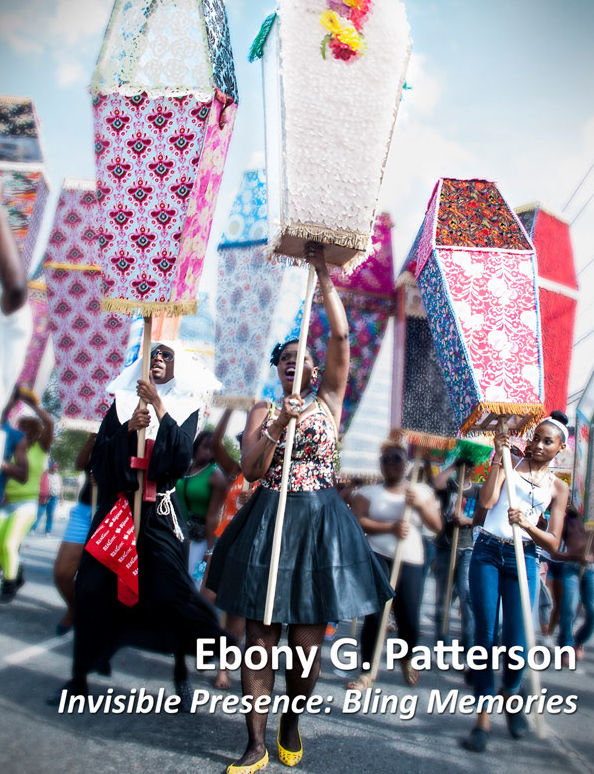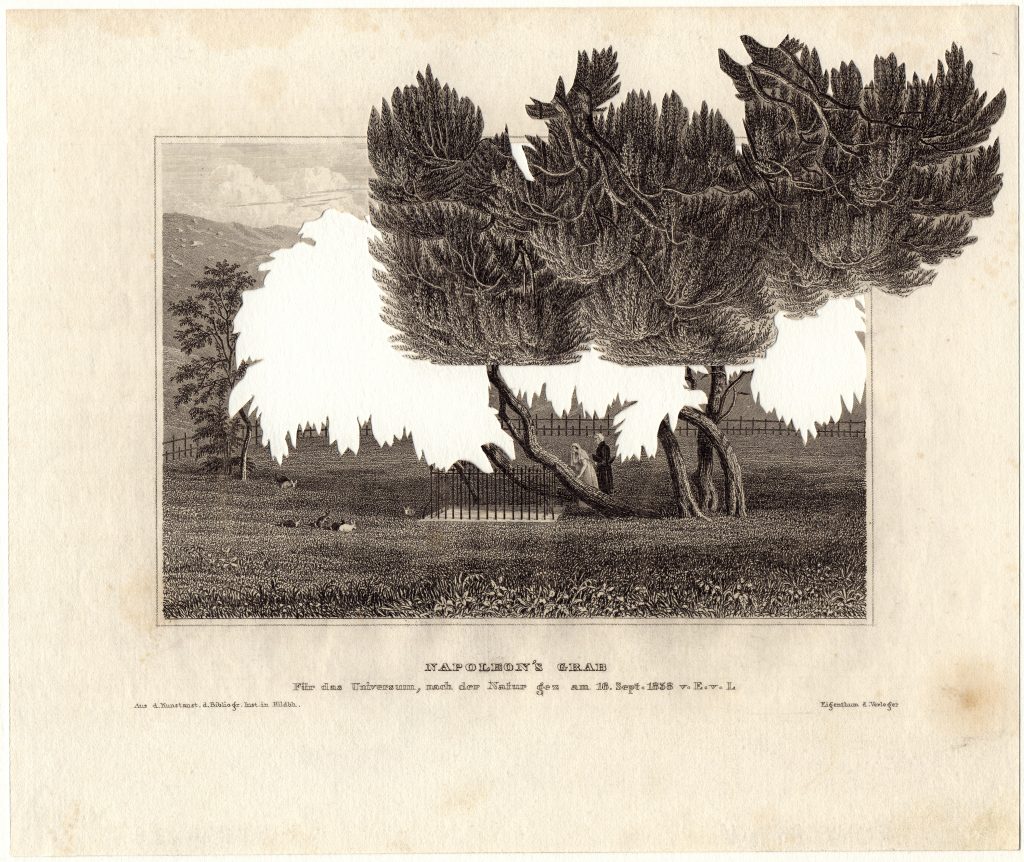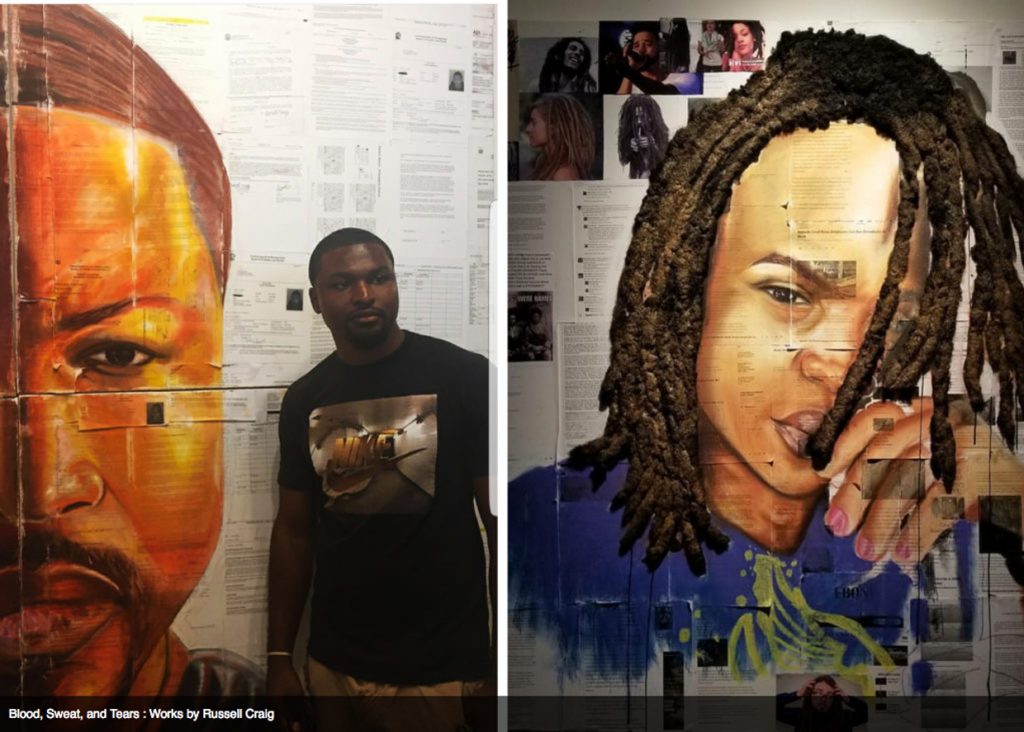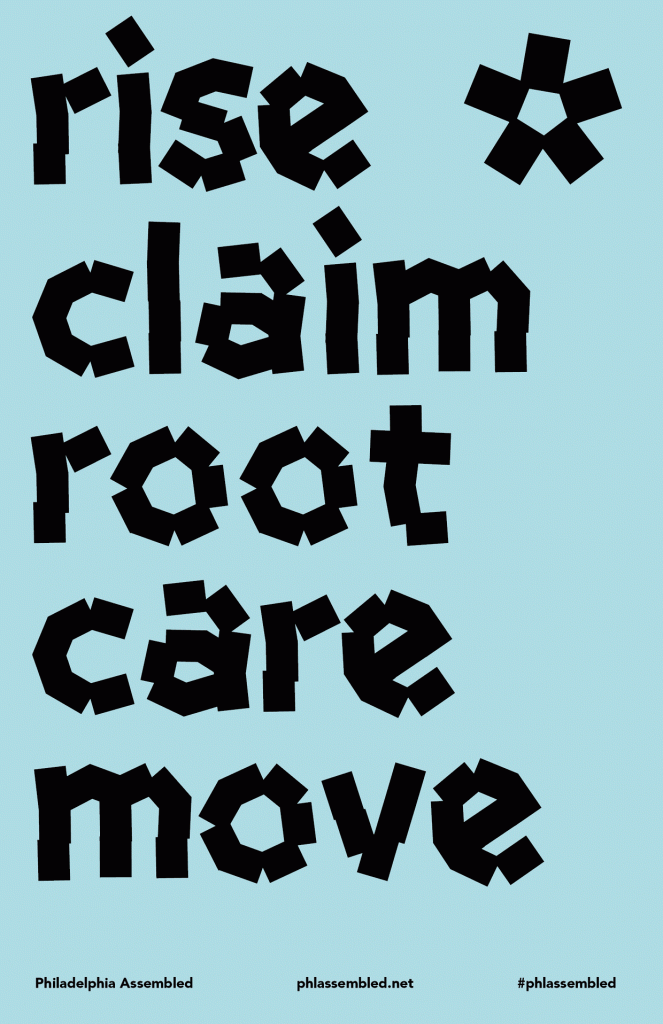 City is Stage for Philadelphia Assembled
City is Stage for Philadelphia Assembled
April through December 2017
Beginning in late April, a project entitled Philadelphia Assembled will manifest in a series of activities and actions throughout the city to illuminate and amplify a broad set of hopes, visions, and questions about Philadelphia’s future. Initiated by artist Jeanne van Heeswijk, working alongside an extensive network of collaborators—among them artists, writers, builders, storytellers, gardeners, healers, and activists—Philadelphia Assembled aims to shape a collective narrative about our city and some of the most urgent issues it faces at a time of heightened transformation. Deeply integrated into the fabric of the Museum, the project also questions the place of this institution in the midst of this change.
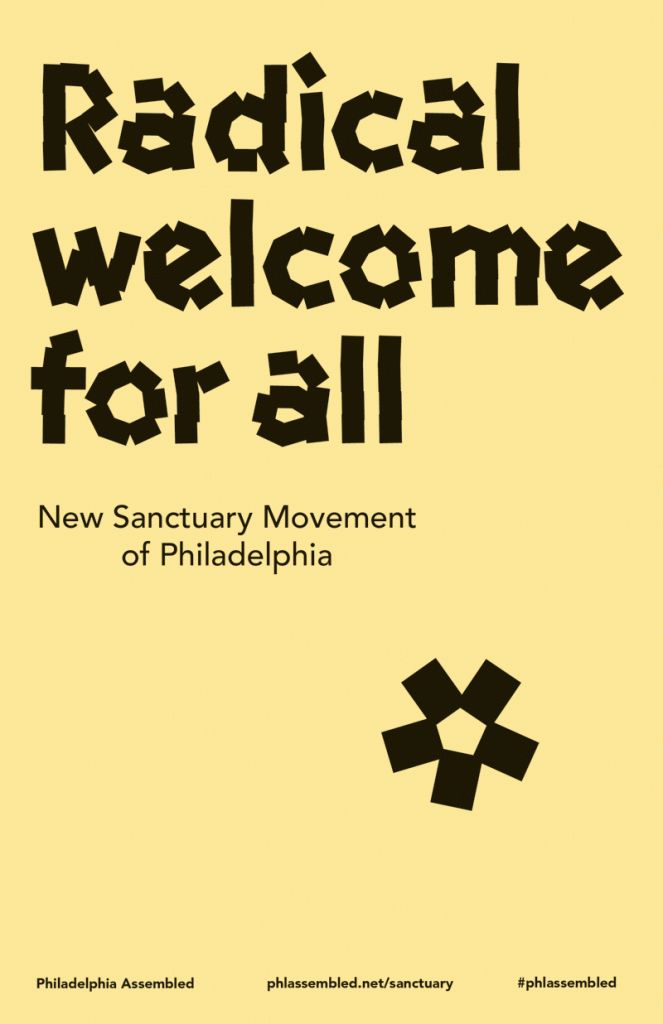
Following this spring season of city-wide programs, the project will culminate in an exhibition opening in September at the Philadelphia Museum of Art. This participatory installation, September 10 through December 10, 2017, will transform the Perelman Building’s ground floor galleries, café, and store into spaces that will celebrate the people, sights, sounds, and tastes of a resilient city’s multi-faceted identity. Admission will be Pay What You Wish.
Evocatively referred to as “atmospheres of democracy”, Philadelphia Assembled addresses a number of issues that are central to the future the city by focusing on key themes such as reconstructions—how we deal with questions of social displacement and reentry into society; sovereignty—how we define self-determination and autonomy; sanctuary—how we understand self-care, asylum, and refuge; futures—how to re-imagine our tomorrow; and movement—how we facilitate action and collective learning.

Van Heeswijk’s work, which is often described as social practice or socially engaged art, combines art and activism. In this spirit, the project brings together voices of those who care about the changing landscape of Philadelphia and who, in life and work, seek to champion and secure a prosperous and equitable future for all of its citizens.
Timothy Rub, The George D. Widener Director and CEO, stated, “Some of the most interesting work being done by artists today straddles the boundary between art and life. In 2013, we invited the Dutch artist Jeanne van Heeswijk to consider what an artist might do in engaging Philadelphia’s many neighborhoods and diverse communities. What began as a conversation has grown, and it has been fascinating—and rewarding—to watch Philadelphia Assembled take on a life of its own. We are looking forward to the moment when our galleries are appropriated to become a stage for the city itself. It promises to be exciting and full of surprises and presents an opportunity to consider how we might define the roles and responsibilities that the Philadelphia Museum of Art can play as a civic institution in a changing city in the 21st century.”
Denise Valentine, a collaborator and Philadelphia storyteller, reflected on this process: “We intend to re-imagine the Philadelphia Museum of Art as a place to unearth stories hidden deep in the soil of Philadelphia. We envision a place where narratives of the enslaved, the incarcerated, the displaced, and the disenfranchised are held in as high esteem as Eurocentric ideas about art, history, and culture.”
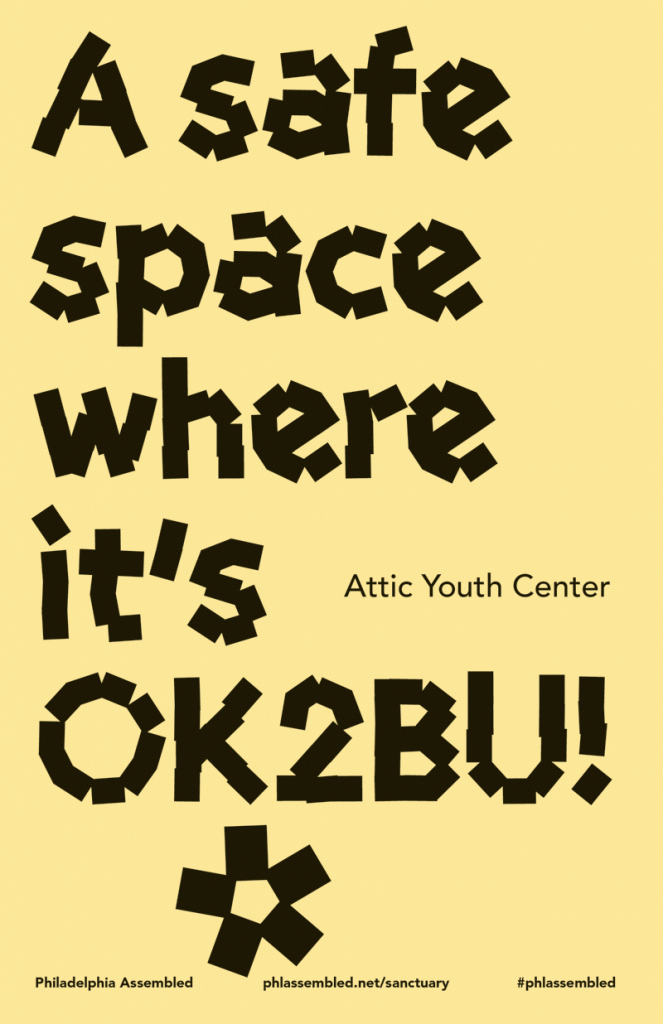
The project’s five “atmospheres” are described below:
Reconstructions
This atmosphere will assemble personal and collective narratives of mass incarceration and gentrification. Its first site, in the Nicetown/Tioga neighborhood, will be realized in close collaboration with Reconstructions, Inc. and the Alumni Ex Offenders Association. This group will offer programs exploring concepts of home, healing and trauma in relationship to imprisonment and reentry, including a teach-in and a neighborhood-wide procession. At a second site, in South Kensington/Olde Kensington, collaborators are examining the impact of gentrification and displacement, working with the Women’s Community Revitalization Project and Healthy Rowhouse Project to re-imagine a community garden at 4th and Master Streets as a dynamic space for discussion.

Sovereignty
Exploring the concepts of self-determination and autonomy, this working group is addressing land sovereignty and cooperative forms of commerce and cultural exchange. Philadelphia Assembled will create a “sovereignty room” at the African Cultural Art Forum on 52nd Street, which will serve as a dedicated space in West Philadelphia for creating unity and cultivating economic sovereignty. Established in 1969, ACAF is a community-based organization that manufactures and sells products by entrepreneurs throughout the African diaspora. In the “sovereignty room” ACAF will host skill trainings and exchanges in preparation for a large public “Sovereignty Marketplace” in June. The second site is envisioned as a network of four urban gardens located in North Philadelphia. Programming and installations across these gardens will inform the ways in which plants, seeds, and land reinforce people’s connection to ancestry and serve as vehicles for nourishment, healing, and future growth. Urban gardens involved include Urban Creators, Norris Square Neighborhood Project Gardens, Fair Hill Burial Grounds, and Stretch and Fly Youth Business Garden.

Futures
The Futures atmosphere is drawing from anti-colonial ideas to model different ways of exploring the future and community building. The Futures site is an active mobile project, called the Mobile Futures Institute, which involves retro-fitting a small bus into a flexible work space that will travel throughout the city, engaging in neighborhood-based programs on issues ranging from decolonization, to environmental racism, to economic justice. Collaborators are working with community members and organizations to produce events and happenings via the Mobile Futures Institute. Current partners include the Center for Returning Citizens, Black Quantum Futurism, Friends Center, Granny Peace Brigade Philadelphia, Norris Square Community Alliance, Mighty Writers, and the Indigenous Peoples Day Movement, among others.
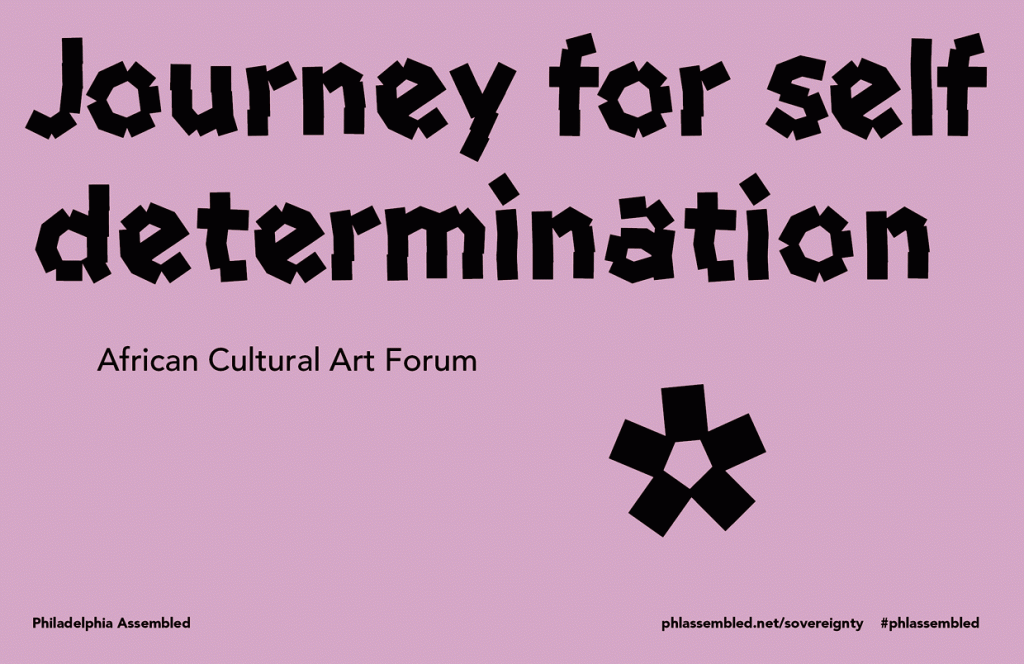
Sanctuary
This group has proposed a combination of sites that will explore various models of self-care, asylum, and refuge. The larger site will be realized at a central location in Center City. The site structure is a geodesic dome inspired by temporary housing units for refugees in Europe. The space will be open for a month of summer programs, offering a layered definition of sanctuary through storytelling, advocacy, and direct action. In the months leading up to the fixed site, a portable site will host a series of activities working with identified partner organizations to address the provision of LBGTQ safe spaces, issues of immigration and migration, and harm reduction relating to drug use and sex work. Partner organizations include the Attic Youth Center, New Sanctuary Movement, Prevention Point Philadelphia, and Project Safe.

Movement
The final atmosphere is one in which the various Philadelphia Assembled working groups intersect. This group is focused on the project’s production, dissemination, and communication, which is manifesting in audio recordings, a dedicated film series, project-specific graphics, an interactive web platform, and site-specific publications. Another component of the Movement atmosphere is the Youth Dream Trust, which will serve as a coalition of youth across the working groups in partnership with the Village of Arts and Humanities. Working closely with Philadelphia-based collective Amber Art and Design, the group will also orchestrate the performative movement of public sites to the Museum. Carrying objects, ideas, and conversations across the city streets, this public movement will culminate in a communal presentation along the ground floor of the Perelman Building, becoming a civic stage where the city is performed.
For Jeanne van Heeswijk, Philadelphia Assembled is a forward-moving process in which she is one among many participants imagining the city’s futures together. She stated: “My work is trying to get to the essence of aesthetics, to understand it as an engaged, inclusive, and proactive practice. This type of work is about using imagination to better understand how we live together. Rising, claiming, rooting, caring, moving – this is how we build a collective exercise of care.”

Members of the public are invited to join the conversation and engage with collaborators by visiting the Philadelphia Assembled website and sharing their experiences via #phlassembled @phlassembled @philamuseum.
Program Events
For a full list of public programs and locations, please visit the dedicated website at phlassembled.net. All Philadelphia Assembled programs are free to the public unless noted otherwise.

About Jeanne Van Heeswijk
Jeanne van Heeswijk is an artist who facilitates the creation of dynamic and diversified public spaces in order to “radicalize the local.” Her community-embedded projects question art’s autonomy by combining performative actions, discussions, and other forms of organizing and pedagogy in order to work alongside communities to take control of their own futures. Van Heeswijk’s work has been featured in publications and exhibitions worldwide, including the Liverpool, Shanghai, and Venice biennials. Accolades include the receipt of the 2011 Leonore Annenberg Prize for Art and Social Change, the 2012 Curry Stone Prize for Social Design Pioneers, and the 2014 inaugural Keith Haring Fellowship in Art and Activism at the Center for Curatorial Studies and Human Rights Project at Bard College. She lives and works in Rotterdam and Philadelphia.

About Social Practice
Social Practice is an art medium that focuses on participation and collaboration with individuals, communities, and institutions in the collective creation of a temporary or permanent community. The process involves careful listening, thoughtful conversation, and community organizing. This is also referred to as socially engaged art, social justice art, community art and new genre public art.
Sponsors
Philadelphia Assembled is made possible by the William Penn Foundation, The Pew Center for Arts & Heritage, Wyncote Foundation, Nancy M. Berman and Alan Bloch, Lynne and Harold Honickman, Mr. and Mrs. Milton S. Schneider, Constance and Sankey Williams, the Mondriaan Fund, and The Netherland-America Foundation.
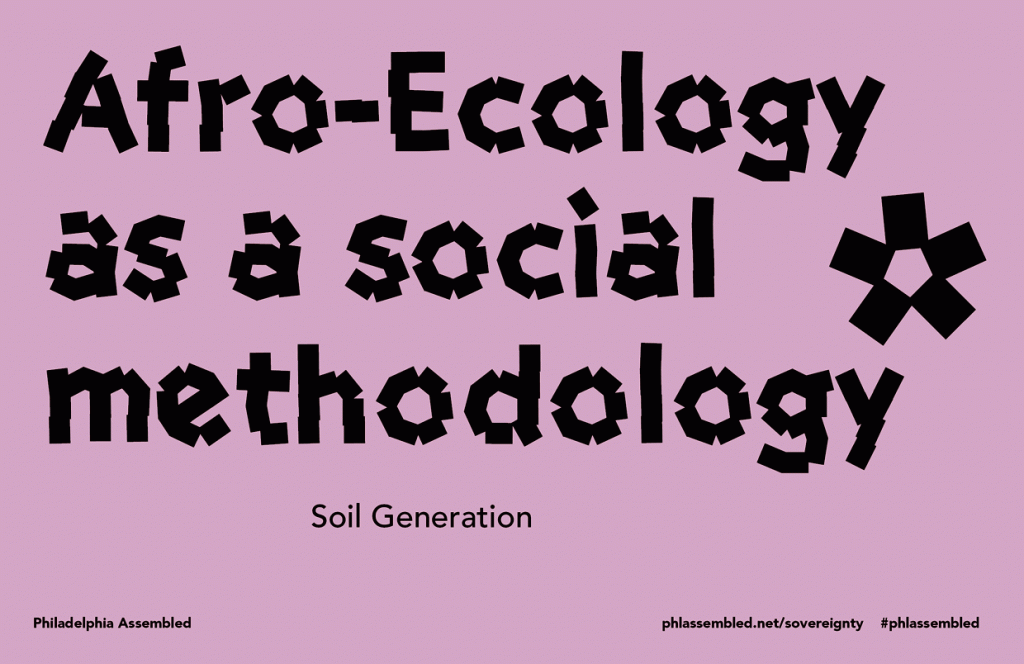
Collaborators
Philadelphia Assembled is initiated by artist Jeanne van Heeswijk and organized with Carlos Basualdo, The Keith L. and Katherine Sachs Senior Curator of Contemporary Art; Amanda Sroka, Assistant Curator of Contemporary Art; Phoebe Bachman, Project Coordinator; and Sheldon Abba, Project Site Manager. Core collaborators include: Amber Art and Design, artist collective; Yana Balson, Associate Director of Exhibition Planning, Philadelphia Museum of Art; Kirtrina Baxter, community organizer and activist grower; Pascale Boucicaut, culinary artist and organizer; Maurits de Bruijn, graphic designer and web developer; Counter Narrative Society (CNS); Helen Cunningham, educator and conflict mediator; Gretchen Dykstra, Senior Marketing Editor, Philadelphia Museum of Art; Morgan Gengo, Marketing and Audience Development Manager, Philadelphia Museum of Art; Shari Hersh, Mural Arts Senior Project Manager and Founder of the Restored Spaces Initiative; Russell Hicks, entrepreneur; in•site collaborative, a research, design, and mapping collective; Nehad Khader, film curator and artist; Jason Killinger, graphic designer; Dianne Loftis, researcher and compiler; Charlotte Lowrey, Project Assistant for the Contemporary Caucus, Philadelphia Museum of Art; Zein Nakhoda, filmmaker; Michael O’Bryan, artist and youth facilitator; People’s Paper Co-op, a collaborative initiative for re-entry; Elisabeth Perez-Luna, journalist and public broadcasting producer; Damon Reaves, Associate Curator of Education, Community Engagement and Access, Philadelphia Museum of Art; Chris Rogers, educator and organizer; Kristin Schwab, community cook and organizer; 75B, design collective; Traction Company, artist collaborative studio; Denise Valentine, storyteller and activist; Phantazia Washington, LGBTQ activist and facilitator; A. M. Weaver, artist and curator; Gee Wesley, artist and curator; Jared Wood, artist; Karina Wratschko, Special Projects Librarian, Philadelphia Museum of Art; and Billy Yalowitz, playwright and community-based performance artist.
Community Partners and Program Hosts
African Cultural Art Forum, Alumni Ex-Offenders Association, The Attic Youth Center, Broad Street Ministry, The Center for Returning Citizens, Coalition for Racial Justice (CoRaJus), Community Futurisms: Time & Memory in North Philly (Community Futures Lab), The Culinary Enterprise Center, Deep Green Philly, The Enterprise Center, Experimental Farm Network, Healthy Rowhouse Project, Historic Fair Hill, Laos in the House, Mighty Writers, MOVE, Mural Arts Philadelphia, New Sanctuary Movement Philadelphia, Norris Square Neighborhood Project, North Central CDC, Philadelphia Area Cooperative Alliance, Philadelphia Association of Community Development Corporations, Philadelphia Coalition for Affordable Communities, Prevention Point Philadelphia, Project SAFE, Reconstruction Inc., Soil Generation, Take Back the Night Philadelphia, Ulises, Urban Creators-Life Do Grow Farm, The Village of Arts and Humanities, W/N W/N, and the Women’s Community Revitalization Project.
Locations
In the City: April – July 2017
Movement to the Museum: July – August 2017
Perelman Building, ground floor: September 10–December 10, 2017
Philadelphia Assembled is a project undertaken in collaboration with stakeholders from across the city and the Philadelphia Museum of Art. The views expressed by individual participants or in materials developed as part of Philadelphia Assembled are representative of the project’s collective conception and production and are not, necessarily, the views of the Museum or any other individual involved.
Social Media
Twitter/Facebook/Instagram/Tumblr/YouTube: @philamuseum @phlassembled
We are Philadelphia’s art museum. We are a landmark building. A world-renowned collection. A place that welcomes everyone. We bring the arts to life, inspiring visitors—through scholarly study and creative play—to discover the spirit of imagination that lies in everyone. We connect people with the arts in rich and varied ways, making the experience of the Museum surprising, lively, and always memorable. We are committed to inviting visitors to see the world—and themselves—anew through the beauty and expressive power of the arts.
For additional information, contact the Communications Department of the Philadelphia Museum of Art phone at 215-684-7860, by fax at 215-235-0050, or by e-mail at pressroom@philamuseum.org.
The Philadelphia Museum of Art is located on the Benjamin Franklin Parkway at 26th Street. For general information, call (215) 763-8100.
Thank you to the Philadelphia Museum of Art for the content of this post.
SEO and Photoshop by DoN.
Like DoNArTNeWs Philadelphia Art News Blog on facebook
Follow the new DoNArTNeWs.com
Follow DoN on Twitter @DoNNieBeat58
DoN Brewer on Pinterest
@donniebeat on Instagram
Affiliate Marketing [disclosure page] Shop on-line and help support DoNArTNeWs


